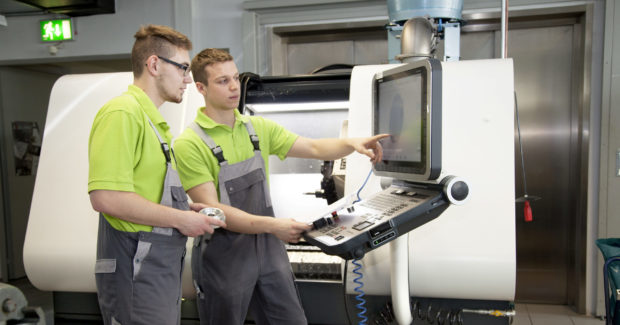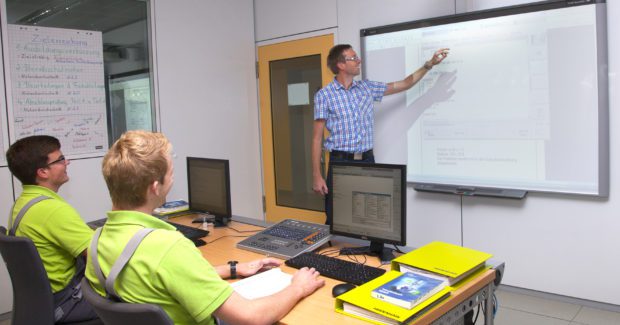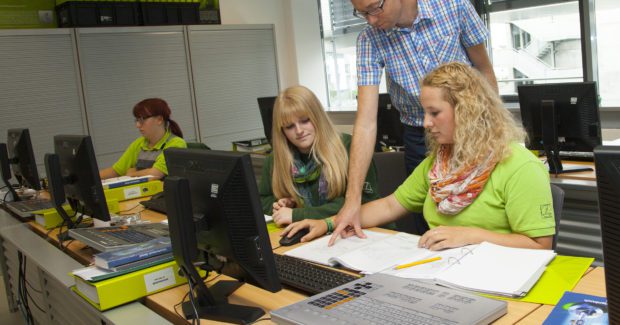Meeting Today’s Manufacturing Challenges with New Training Tools
The new generation machinist is looking for more relevant, engaging and flexible learning tools so they can be prepared for an exciting career path in manufacturing.
Posted: August 23, 2022
WORKFORCE MATTERS
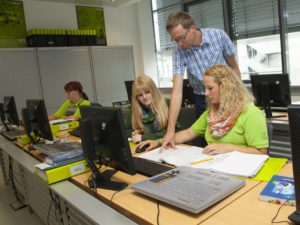
The manufacturing industry took a few roller-coaster rides over the last decade. Many may remember the big financial crisis that started right after IMTS 2008 closed. This caused many manufacturing sectors to stop investing and hiring new talent. Therefore, many trade schools lost enrollment and, in turn, the funding to invest in new machinery and technology.
At the same time, the baby boomer generation (born 1946–1964) started to leave the workforce which was not overly concerning because the job market in manufacturing declined due to more offshoring to low-labor-cost countries like China. This led many school counselors and parents of high school children to guide the students towards non-manufacturing college degrees and not even consider a career in manufacturing via an apprenticeship program.
Fast forward to March 11, 2020, when the World Health Organization declared a pandemic due to COVID-19. Now suddenly, the manufacturing industry became the center of the attention as we learned that we could not even produce simple medical devices and supplies in this country. That is when the reshoring trend gained momentum and the manufacturing industry was crying for talent, but the pipeline was empty.
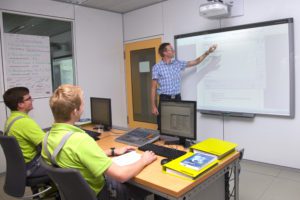
The current trend of the baby boomer generation leaving the workforce, also called the Great Resignation, has decreased the talent pool for manufacturing professionals even more. This trend is leading to an even higher demand for the next generation of manufacturing professionals and these jobs certainly pay more than being a college graduate who sometimes decided to work as a barista or restaurant worker.
“The days of having a college diploma guarantee a good job have long been over. More and more, college graduates are not only seeing employers shrug their shoulders at diplomas, but also the job opportunities that are available to them often don’t pay enough to cover their student loan debt.” 1 .
According to the National Association of Manufacturers (www.nam.org), 2.1 million manufacturing jobs could go unfilled through 2030. Currently, there are more than 850,000 open manufacturing jobs in the United States.
Over the last three to five years, we’ve already seen educators at high schools, community colleges and four-year degree institutions invest more resources in manufacturing career curriculums though at the same time not necessarily taking advantage of the latest teaching and manufacturing technologies. Some educators think they can just dust off some of the equipment they purchased 10 years ago and be ready to bring students back to their classes and place them easily at manufacturing companies after graduation.
This will not work if the teachers and administrators listen to what the industry is facing and how the students now prefer to learn.
Current Industry Challenges:
First, it’s important to note the industry’s current challenges.
- Finding and keeping skilled professional CNC operators.
- Combating global competition and reshoring issues.
- Incorporating the new digital manufacturing and Industry 4.0.
- Meeting the need of increased flexibility in the manufacturing process, such as with small lot sizes.
New Talent Expectations:
We don’t have to look too far to see how technology advancements over the last decade have transformed how our young people function. Children as young as 12 often own a cell phone, and that cell phone is certainly not a flip phone anymore. This means instant access to information for them, including learning/entertaining videos at any given time of the day. Because of all this, today’s youth have several common expectations when considering career paths:
- Flexibility to learn in or outside of the classroom.
- Expect instant gratification.
- Look for ways that they can make a difference in their future job/career.
- Seek out exposure to new technology.
- Be part of a community with the same or similar values.
- Make money to fund a modern lifestyle.
- Be provided job opportunities after school or while in school.
What does all this mean for technical schools? Well, they need to listen to their potential students on one hand and the industry who is looking for talent on the other.
Trend to New Flexible Teaching Tools

The machine tool industry and respective CNC control producers have recognized the trend to new more flexible teaching tools for a while and many now offer modern and more engaging tools. Let’s start with machining software and programs available that enable virtual training classes, for example, the HEIDENHAIN interactive training tool or, in short, HIT. This tool allows the teacher to create a virtual classroom and offer machine tool training as a complete curriculum. It not only addresses specific CNC programming topics but it starts out with many fundamental machining sessions. This includes things like identifying what are the different axes on a milling machine, how they work and what type of cutting tools are used with them, etc.
After every learning chapter, HIT provides a test for the student and if he/she passes, they can move on to the next level. For example, if the student mastered the 3-axis machine programming, the next session will be on 3 plus 2 and then eventually full 5-axis machining training. The teacher can follow the progress at any time, assign homework and even create their own training module within the software because it is developed on a Moodle platform (open-source software) that is widely used in universities and colleges worldwide.
Another flexible modern teaching tool are downloadable machine programing stations. For example, options to learn how to program a 5-axis machine tool are available for download from HEIDENHAIN and are fully functional with a digital knee-board. These programming stations don’t require special hardware and can be downloaded to the student’s laptop or a PC used in the classroom or at home.
It is important for educators to note that machine tool programming can be done in different formats. Some use G-code which takes some training as it requires specifying codes to describe a geometry, tool path or any special function; this necessitates a deep understanding of math to calculate tangent lines to radiuses or circles, etc. That is why many schools have invested in CAM systems to program a CNC machine which requires another investment and skillset for the teachers. While a CAM system is very powerful when it comes to full 5-axis programming, however, there are more effective and less expensive ways to engage the student to get the same or better results.
Modern CNC’s offer conversational language formats(at HEIDENHAIN, we call this KLARTEXT). That translates to “easy to understand” programming syntax like for arcs, lines and points, etc. Here codes are not used, but answers to questions instead. For example, within HEIDENHAIN CNCs, there are interactive windows on which the student/operator just answers some questions, and the control will create a full drilling or trochoidal cycle. The simulation and graphic capabilities of the programming stations allow the students to see immediately what they programed in a 3D model on which they can zoom in and out like they do on their photos in their mobile devices. If the school administrators are using a KLARTEXT system in a downloaded format and want to upgrade to a real machine keyboard for the classroom, they can simply add this piece of hardware from HEIDENHAIN and connect it to their existing PCs or laptops. This creates a setup similar to as if the student was in front of the actual machine.
The next level up from that is the acquisition of “digital twin” machining software that not only simulates a machining tool path and workpiece but also the entire machine kinematic which is very important when simulating 3+2 parts or full 5-axis machining functions. The use of a digital twin shows the student if they programmed the part right without colliding with the machine table or other expensive machine components like spindle tool holders, etc.
Overall, the manufacturing industry is in a transition to the digital shop floor and is hungry for talent that understands that basic concept. This means less paper, more machine connectivity, process planning and monitoring. Here again, an educator does not need to break the bank to teach the next generation of manufacturing professionals how to monitor machine efficiency, establish a maintenance plan and connect via MT-Connect or OPC-OA protocol either to a simulator software or a real machine. To meet this need, HEIDENHAIN also offers software called StateMonitor, which provides access to machine monitoring task and outputs sophisticated data analytics that can be interfaced into ERP or MES systems. This software works on mobile devices as well as stationary PCs and can be rented or purchased at special school pricing via the HESP (HEIDENHAIN Education Support Program), providing easy access to Industry 4.0 and the digital shop floor education.
To summarize, the industry is hungry for the next level of talent, not the next machine operator simply pushing buttons and running programs that a programmer had to create for them. The new generation machinist is looking for more relevant, engaging and flexible learning tools so they can be prepared for an exciting career path in manufacturing. Let us veterans in the industry make it happen and be ready to help schools transition their teaching methods towards the digital shop floor career path.
End Note: 1. Chicago Tribune: “Trade Schools Equally Respectable to 4-YR Colleges”- May 3, 2022
Subscribe to learn the latest in manufacturing.



